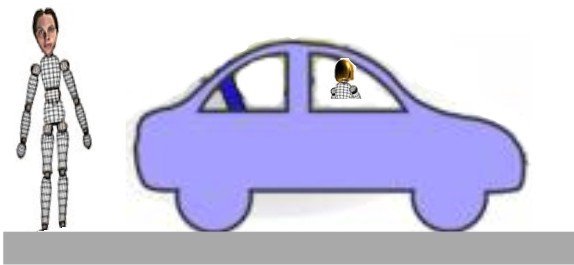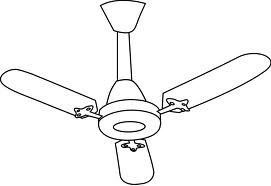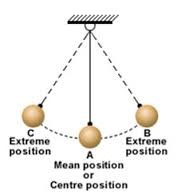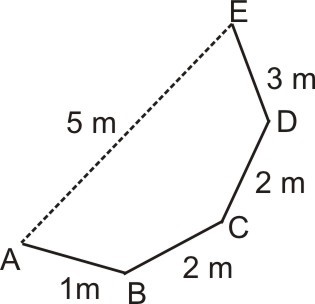In everyday life, we see that many objects are stationary while others keep on changing their position. We can see beautiful birds flying and fishes swimming in water. Atoms, molecules, planets, comets, stars and galaxies are all moving.
Many times, motion or change in position of an object cannot be seen directly but it can only be inferred through indirect evidence. For example we know that air is moving when we see leaves moving but we cannot see it directly.
Many times, motion or change in position of an object cannot be seen directly but it can only be inferred through indirect evidence. For example we know that air is moving when we see leaves moving but we cannot see it directly.
Many times, motion is a complex phenomenon. The same object may appear to be moving for one person but may be stationary for the other. A person outside the car may see a car moving but two people inside the car may appear to be at rest with respect to each other. Some objects move in a straight line while others move in a circular path
Also Check: Force
Motion or Rest
If we look around, we can find numerous examples of motion. Moving of car, running of train, walking of people, flying of bird are common example of motion. Objects (train, car, people) changing their position as time passes. Any object said to be in motion if it changes its position with respect to surrounding or with respect to time. Similarly which does not change its position is said to be a rest.

A ball in Motion, Changing its Position from A to B
Position
Location of particle in given reference frame is known as position. In physics, we use axis and coordinate to locate the position of a body.

Change of position of a ball in a given reference frame
Motion
A body is said to be in motion when its position changes continuously with respect to a stationary object taken as a reference point.
Rest
A body is said to be at rest when its position does not change with respect to a stationary object taken as a reference point.
Also Check: Universe
Motion and Rest are Relative Terms
Consider a situation when a man (M1) is standing on roadside and another man (M2) moving in a car. The man M1 observe than the man M2 is moving along with car and driver, but man M2 observes that car is at rest and so its driver.

Consider another case, suppose you are travelling in a train. You observe that people around you are not moving (at rest) but a person who is at ground will observe that every people inside the train, including you, are moving with train.
That mean, motion or rest is a relative term, a body can be at rest or in motion at the same time depending upon the point of reference (point of observation).
Types of Motion
A body can perform motion in there ways
- Translatory motion
- Rotatory motion
- Vibratory or oscillatory motion
Also Check: Electroscope
Translatory motion
A bike on road performing translator motion
In translatory motion, the particle moves from one point in space to another. This motion may be along a straight line or along a curved path. For example moving a bus in zig-zag road or moving of metro car on a straight track.

A bike on road performing translator motion
Rotatory Motion

A fan performing rotatory motion
In Rotatory motion, the particles of the body describe concentric circles about the axis of motion. For Example, The fins of the ceiling fans.
Vibratory or Oscillatory Motion

A Simple Pendulum performimg Oscillatory Motion
In Vibratory motion, the particles move to and fro about a fixed point. For example, the motion of swing or a simple pendulum.
Physical Quantities
If I ask how happy or sad you are today? You will not have a definite answer. Instead, if i ask how much you weigh? You will have definite answer; you can measure your weight. Those quantities which can be measured are known as physical quantities. For example, mass, weight, speed, velocity, acceleration etc. All physical quantities can be classified into scalar or vector quantities.
Also Check: Buoyant Foce
Scalar and Vector Quantites
Scalar Quantities
The physical quantities which are described only by the magnitude only are known as scalar quantity.
Example: Distance, Mass, time, work, energy, power etc. are scalar quantities.
Vector Quantities
The physical quantities which are described by the magnitude as well as the direction are known as vector quantities.
Example : displacement, velocity, acceleration, weight, etc, are vector quantities.
Difference between Scalar and Vector Quantities
| S. No. | Scalar quantities | Vector quantities |
| 1. | Scalar quantities are described by magnitude only. | Vector quantities are described by magnitude as well as direction. |
| 2. | Scalar quantities change with change in magnitude only. | Vector quantities change with the change in magnitude or with the change in direction or both. |
| 3. | Scalar quantities can be added or subtracted using ordinary rules of algebra. | Vector quantities cannot be added or subtracted using ordinary rules of algebra. |
| 4. | Scalar quantities are represented by ordinary letter. e.g. A | Vector quantities are represented by letters having arrow over them. e.g. . |
Distance & Displacement
Distance: The actual length of the path travelled by a body is called distance. It is measured in metre (m). It is a scalar quantity.
Also Check: Waves
Displacement : The shortest distance measured from the initial to the final position of a body in a particular direction is known as its displacement. It is also defined as change in position. It is measured in metre and is a vector quantity.

For Example, In above figure a particle is moving from point A to E via B, C, D. The distance covered by the particle is 8 m while the displacement (the shortest distance) by the particle is 5 m.
Illustration 1: A farmer moves along the boundary of a square field of side 10 m in 40 s.
- What will be the magnitude of displacement of the farmer at the end of 2 minutes 20 seconds?
- Calculate distance and displacement in the following cases:
(i) From A to B (ii) from A to C (iii) ABCDA
Solution. (a) In figure, ABCD is a square field of side 10 m.

Time for one round = 40 s
Total time = 2 min 20 s
= (2 x 60 + 20) s
= 140 s
Number of rounds completed = 140 / 40 = 3.5
If farmer starts from A, it will complete 3 rounds (A -> B -> C -> D -> A) at A. In the last 0.5 round starting from A, he will finish at C.
Displacement = AC , where AC = 
(b) (i) Distance travelled from A to B = 10 m
Displacement from A to B = 10 m
Therefore, distance and displacement are equal if the object travels in the same straight path
Also Check: Sound.
(ii) Distance travelled from A to C = AB + BC
= 10 m + 10 m
= 20 m
Displacement from A to C = AC = 10 root 2 m.
Therefore, distance travelled is always more than the displacement if there is a change in direction of motion
(iii) Distance travelled from A, back to A = AB + BC + CD + DA
= 10 + 10 + 10 + 10 = 40 m
Displacement from A, back to A = 0 m
This is because the shortest distance between initial position (A) and final position (A) is zero.
Therefore, the displacement of a moving object may be zero but distance travelled cannot be zero.
Difference Between Distance & Displacement
| S. No. | Distance | Displacement |
| 1. | Distance is the actual length of the path travelled by the particle in a given interval of time. | Displacement is the shortest distance between the initial position and the final position of the moving particle in a particular direction. |
| 2. | Distance travelled by the particle in a given interval of time is always positive. | Displacement of the particle in a given interval of time may be positive, negative or zero. |
| 3. | Distance travelled by the particle depends upon the path followed by the particle in going from initial position to the final position. | The displacement of the particle between initial position and final position of the particle does not depend upon the path followed by it. |
| 4. | Distance is scalar quantity | Displacement is a vector quantity. |
Frequently Asked Questions
Periodic motion occurs when movements repeat themselves at regular time intervals
Rotational motion describes the movement of an object in a circular path around a central point or axis.
Newton's First Law of Motion states that an object will stay at rest or continue to move at a constant velocity unless acted upon by an external force.
Newton's Third Law of Motion indicates that for every action, there is an equal and opposite reaction.
Oscillatory motion refers to motion that moves back and forth repeatedly over a certain period. If it involves mechanical systems, this is often referred to as vibration.
Related Links
| S.no | Formulas List |
|---|---|
| 1. | Force |
| 2. | Frictional Force |
| 3. | Thrust and Pressure |
| 4. | Buoyant Force |
| 5. | Waves |
| 6. | Sound |
| 7. | Some Natural Phenomena |
| 8. | Electroscope |
| 9. | Lightning |
| 10. | Earthquake |